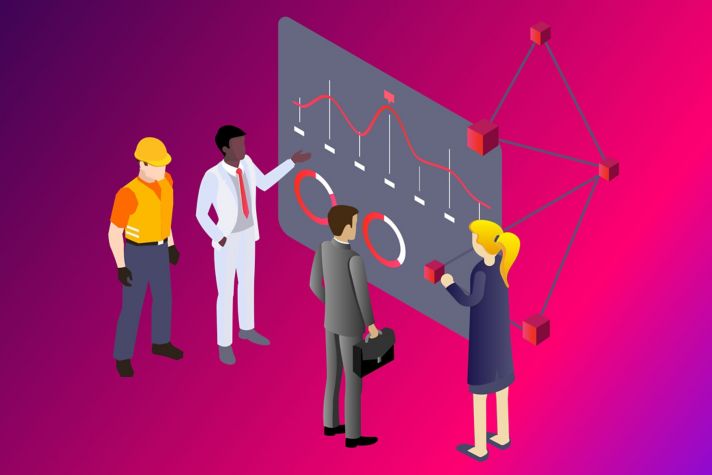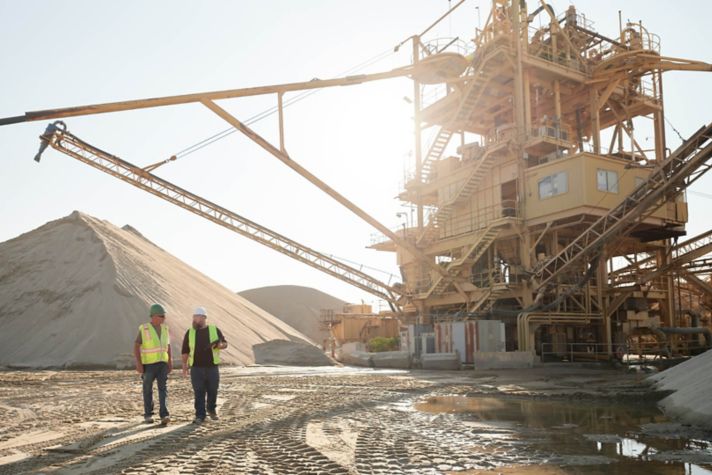-
Global
-
Africa
-
Asia Pacific
-
Europe
-
Latin America
-
Middle East
-
North America
- |
- BUSINESSES
- |
- Contact
- |
-
Global
-
Africa
-
Asia Pacific
-
Europe
-
Latin America
-
Middle East
-
North America
- |
- BUSINESSES
- |
- Contact
- |
You are browsing the product catalog for
You are viewing the overview and resources for
- News
- The Last Gap in Industrial Digitization – The Deskless Worker
The Last Gap in Industrial Digitization – The Deskless Worker
How to bridge the digitization gap for deskless workers by integrating advanced technology solutions and innovative practices
At last check, Industry 4.0 was well on its way, as collected big data had become the digital straw industrial enterprises could spin into gold when combined with the right hardware, software and algorithms. And yet critical data is missing in mapping out what will eventually become an industrial knowledge graph. The culprit? The simple clipboard on-the-ground workers use to collect data during manual inspections and maintenance checks. Often, that data doesn’t get where it needs to go.
These deskless workers, employed in manufacturing plants, refineries, airports, hospitals and more, comprise 80 percent of today’s global workforce (2.7 billion deskless workers), according to Venture Beat. And despite living in the digital world, most still make their rounds with pen and paper in hand.
The Cost of Inefficient Data Collection
Manual workflows in oil and gas, mining, transportation and pharmaceutical industries, etc. leverage little of the mobile, cloud and software revolutions of the last 20 years.
This gap in digitization leaves businesses vulnerable to inefficiencies and risks that significantly impact their operations.
These consequences include:
Unplanned downtime
Manual standard operating procedures stand in the way of production growth. They contribute to unscheduled downtime, expensive repairs and insurance expenses, costing industrial enterprises millions in lost revenue.
Missing data
With inspection and maintenance logs as the only paper trail, data can easily be misplaced or incorrectly documented. There’s no way of tracking if forms are completed. And without a central place to capture and store information, data can’t be aggregated to provide a complete view of operations.
Unsafe work conditions
It’s a harsh reality that industrial conditions can be dangerous. If potential gas leaks or equipment pressure levels aren’t closely monitored, they can result in serious workplace injuries and increased liability costs.
Recruiting challenges
Much of today’s industrial workforce will be retiring in the near future, putting financial pressure on recruiting and training new employees. And when fresh-faced tech university graduates see plant employees clutching clipboards instead of tablets, they may be difficult to recruit.
Compliance and regulation issues
Increasing global regulations are adding complexity to standard procedures. Compliance has never been harder, and the stakes — fines, shutdowns and the loss of customers — have never been higher.
A lost competitive edge
Incorporating Industrial Internet of Things (IIoT) industry-wide is no longer a “nice to have.” It’s quickly becoming a baseline requirement. Enterprises that don’t digitally transform may slowly be left behind by savvier competitors.
The Realities of a Paperless World
Businesses engaged in workflow transformation will see significant enhancements in their operations, providing a path to the benefits of Industry 4.0.
A centralized data repository.
Workers, armed with tablets and mobile devices, can electronically capture data that’s automatically fed into a single cloud-based system. Connected platforms and constantly updated data provide a digital view of what’s happening throughout an operation in near-real-time.
Every worker becomes an expert. Digital workflows rely on interconnected platforms that talk to each other and gain self-awareness (machine learning). They offer a feedback loop of increasingly intelligent insights to help worker complete tasks more effectively. They also drive continuous improvement.
Predictive analytics vs. reactive solutions. AI models built from collected data and predictive analytics drive proactive business decisions. Operators don't have to wait for a machine to break down — they’ll receive warnings well in advance and can respond quickly to avoid production losses, safety issues and machinery wear-and-tear.
All workers accounted for. With digital record keeping and personal sensors in oil and gas refineries, for example, when a gas leak alarm goes off, managers will know exactly where workers are, if they’re safe and whether they have to be removed from a designated area.
Fewer regulatory fines. Proving that operations adhere to government regulations is a lot easier when data is current, correct and centrally housed.
The Future of the Industrial Knowledge Graph
Fast forward to a future where clipboards and paper forms have gone the way of the floppy disk, and industrials will have a fully realized, 360-degree view of their operations. Where can it take them?
Imagine industrial enterprises being able to squeeze greater efficiencies out of already efficient operations. Being alerted to the earliest hair trigger malfunction in a pipeline, a generator or an engine. Fewer stories about a gas explosion, a system shutdown or a plane crash. And you’re beginning to understand the potential of an industrial knowledge graph.
With a truly connected business and connected workers, interdependent platforms create an integrated and end-to-end context. The system is constantly learning.
Data-hungry AI. Every time a worker enters data into a centralized workflow platform, it enriches the system because it’s connected to everything else. Machine learning models provide insights to enhance the graph, which yields even better models. As more data is collected, the context that can be created with that data grows exponentially.
Building AI-based industrial solutions relies on understanding what a problem looks like in the early stages, not when it’s critical.
The search for ROI. Any business considering a digital industrial workflow would love solid ROI data to support their decision.
Honeywell End-to-End Solutions
Honeywell’s extensive experience across industries provides critical domain expertise and a deep understanding of the specific needs of each worker and industry. These insights are especially relevant in oil and gas refineries. By combining this expertise with advanced digital solutions, Honeywell is uniquely equipped to bridge gaps in operations and create a fully integrated knowledge system.
Solutions like these will drive continuous improvements throughout an entire enterprise’s ecosystem. And start creating a safer, smarter workplace for the 2.7 billion deskless employees.
Copyright © 2025 Honeywell International Inc.



